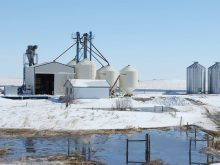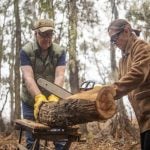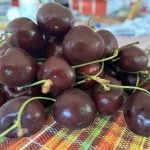Teenagers who recently shared their visions for the future of family farming presented models similar to what’s found on their home farms.
That didn’t surprise the session’s host, Sheila Friesen, program manager with Agriculture in the Classroom, which hosted the Youth Vision for Agriculture Challenge in Saskatoon Feb. 15 in conjunction with the Saskatchewan Soil Conservation Association conference.
“They have thought through this stuff more than we give them credit for,” Friesen said. “They are thinking about the future.”
She said students participating in the challenge talk about where agriculture is going and what will be viable in the future.
Read Also

Communication key to bridging generation gap
Each generation is shaped by the predominant forces at play during their formative years. Acknowledging these influences can improve communication among the generations.
A packed conference room of educators, farmers and parents heard presentations from Grade 12 students from Tisdale, Sask., Foam Lake, Sask., and Lloydminster.
“By listening to them, perhaps the seasoned farmers will gain some insight into where the future is going,” she said.
“We hope to reach other young people with the message that agriculture in Saskatchewan matters.”
For the students, the event was a chance to investigate and create the best sustainable farming models.
“It’s an experience that will benefit them in more ways than just marks,” Friesen said.
The challenge invited students to create a five-year plan for a 2,500-acre family farm at Kipling, Sask.
Tisdale Middle and Secondary School students Kael Schell, Kyle Kidney and Gene Enderson chose to maintain the cattle herd, keep abreast of market changes, explore value-added processing, direct market meat and add a honey bee operation.
They chose a rotation of crops to fit the thin black loam soil and mitigate crop failure risks. Peas were chosen to add nitrogen to the soil, while canola and alfalfa were a good fit with the bees and with the cattle as feed.
In addition to using inoculated seed and fertilizer, the trio chose to hire custom seeding and harvesting to avoid major capital expenditures during the farm’s transition to direct seeding.
Direct seeding benefits include trapping snow and moisture in stubble, they said.
The Tisdale team conceded the plan closely follows what is happening on their home farms.
The teenagers, who all plan careers in farming and have studied agriculture in high school, came to learn more about sustainable farming.
“I thought it would be neat to see the other ideas for diversification and cropping,” Kidney said.
Added Enderson: “Others had different ideas than we did.”
The Foam Lake students looked at a debt-free farm within five years while the Lloydminster squad incorporated purebred cattle into its plan.
Stephanie Pipke-Painchaud, an agriculture teacher in Tisdale, said the exercise allowed students to examine another part of Saskatchewan.
“It gets them thinking about what they are doing. A lot of these things they are already doing, so this helps reinforce that.”
AITC is a charitable organization supported by Saskatchewan Learning and Saskatchewan Agriculture that provides teachers with agricultural education resources.














